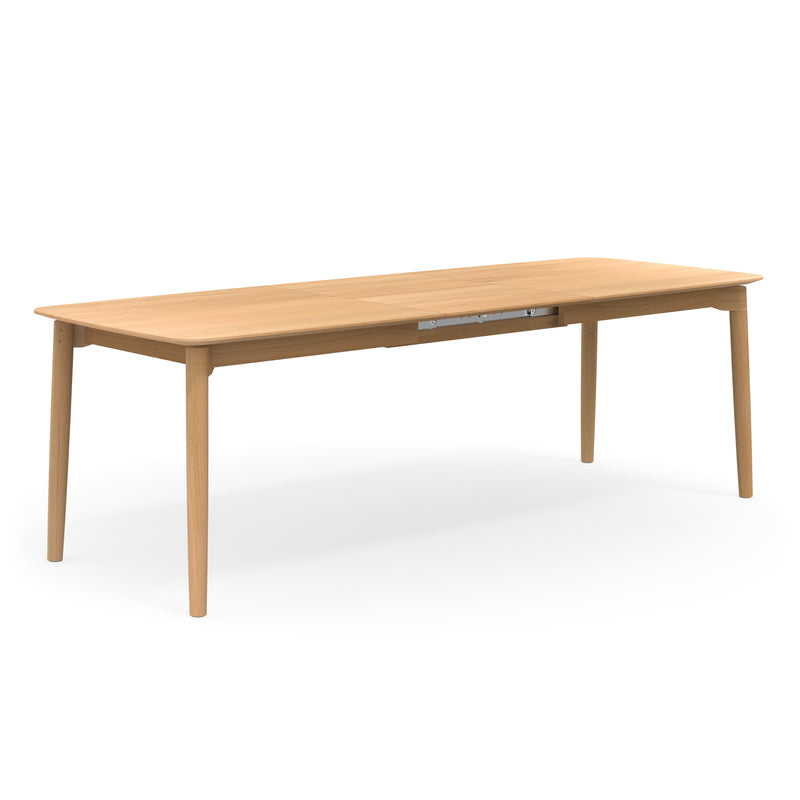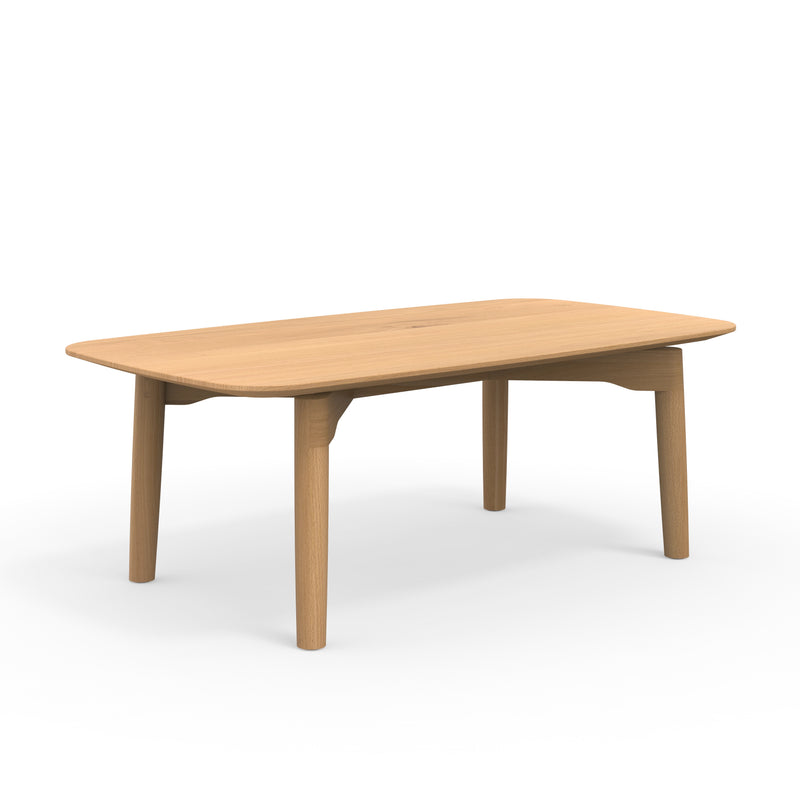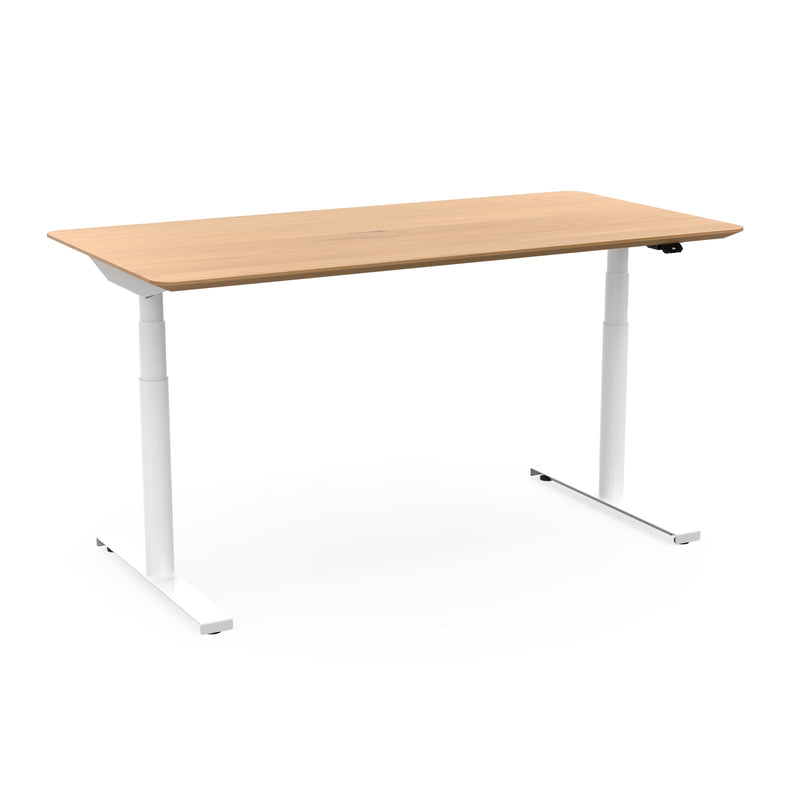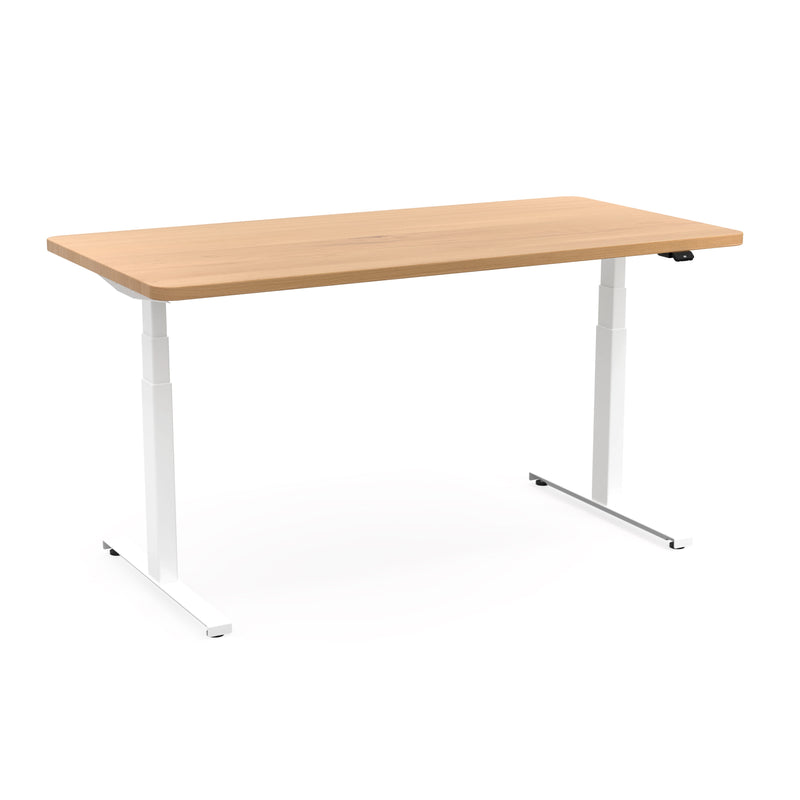Beech
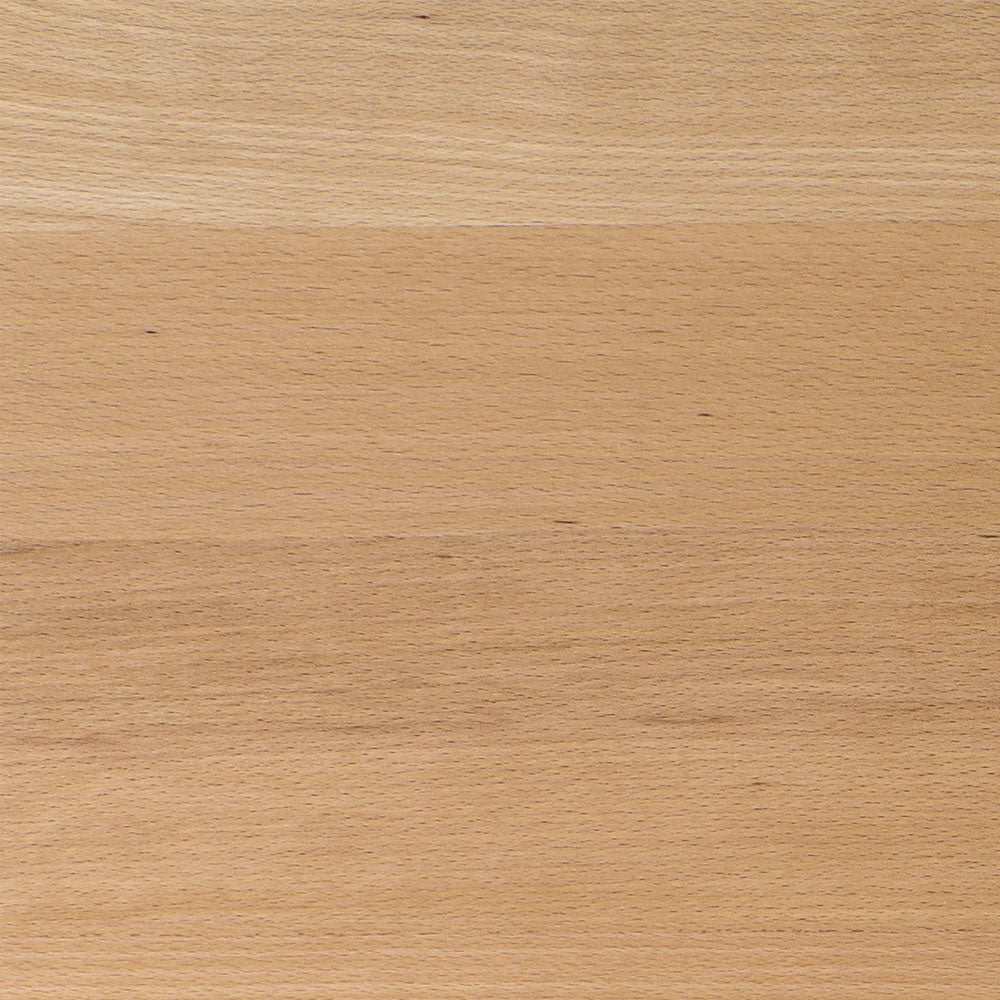
Beechwood is a fine-grained, versatile hardwood with a high strength. It has an attractive smooth surface and even texture and is ideal for furniture, interior design and everyday objects. The colour palette ranges from light yellow to reddish brown and creates a bright, friendly room effect.
What does beech wood look like?
Beech wood is known for its fine, even grain with a smooth, calm surface. Its natural color ranges from light beige to a warm, reddish-brown tone. It is characterized by a uniform structure without noticeable knots.
As a natural material, beech wood may vary in appearance. Especially with solid wood, individual pieces of furniture can show slight differences in color and grain.
In contrast to core beech, standard beech wood is selected from younger trees with a calmer and lighter grain. This results in a more uniform and tranquil appearance overall.
How is beech wood treated?
Beech wood is commonly oiled, waxed, or lacquered. A transparent furniture oil is particularly popular, as it enhances the natural color while allowing the surface to remain breathable.
A lacquer forms a protective seal on the wood surface, while an oiled finish keeps the pores open – allowing the wood to absorb and release moisture. Although oiled beech is slightly more susceptible to signs of use than lacquered surfaces, it is easy to clean and can be re-oiled as needed. Scratches and stains are also easier to remove over time. In addition, furniture oil is usually the more eco-friendly option, thanks to its natural ingredients.


Environmental impact of beech wood
Beech wood is a local, renewable resource and is one of the most sustainably usable hardwoods in Europe. Thanks to its wide availability and short transportation routes in Central Europe, it is particularly attractive from an ecological perspective.
1. Sustainable sourcing
Beech is the most common deciduous tree species in German forests. Its sustainable use is ensured by certifications such as FSC and PEFC, which guarantee controlled harvesting and the preservation of forest stock.
2. Processing and energy consumption
Processing beech wood is relatively energy-efficient. Thermal treatment (steaming) does require additional energy but improves dimensional stability. Compared to other materials, the overall energy demand remains low.
Thanks to its regional availability, the CO₂ footprint of beech wood can be kept low. Sourcing from local forestry minimizes transport emissions.

3. Durability
Beech wood is hard and abrasion-resistant, though less weather-resistant than oak. Indoors, it stands out for its stability and strength – ideal for furniture, flooring, and stairs.
4. Reusability
Most beech is incinerated in biomass power plants via the recycling system and as bulky waste. Although the incineration is CO2-neutral – the beech tree has previously removed the CO2 from the atmosphere – the good repairability of the material is more interesting from an ecological point of view. In the furniture sector, in particular, oak can be easily glued, sanded or re-oiled when damaged or worn, and then looks like new again.
5. Biodegradability
Beech wood is a fully biodegradable natural material. Under natural conditions, it decomposes without residue and becomes part of the nutrient cycle again.
Technical properties of beech wood
| Property | Value |
|---|---|
| Wood type | Hardwood |
| Density (bulk density) | 0.68 – 0.75 g/cm³ |
| Compressive strength | 50 – 60 N/mm² |
| Bending strength | 100 – 120 N/mm² |
| Brinell hardness | 34 – 38 N/mm² |
| Modulus of elasticity | 13,000 – 14,000 N/mm² |
| Durability | Very durable indoors |
| Weather resistance | Low – suitable for indoor use only |
| Color | Light to reddish brown |
| Workability | Very good, easy to sand and glue |
| Applications | Furniture, interior fittings, toys, kitchen utensils |
Beech wood at ekomia
Due to its excellent properties, fine appearance, and sustainability, we use beech wood in selected collections – especially for tables.
We exclusively use European beech from sustainably managed forests with FSC or PEFC certification.
For surface treatment, we rely on vegan, ecological furniture oils – keeping the wood breathable and easy to maintain.

Questions & answers for Beech
Here we answer some questions about Beech that are frequently asked by other users.
Do you still have any questions?
Do you have any questions or comments on this topic? Write a comment, we will be happy to answer.

